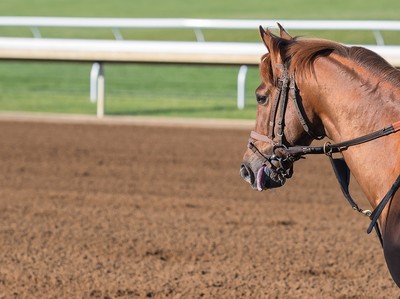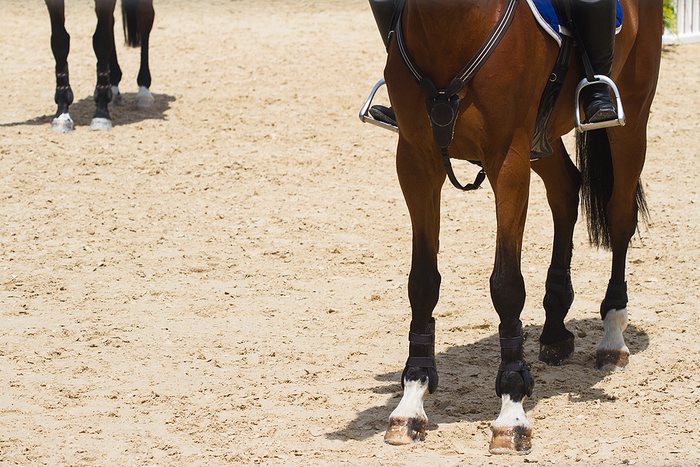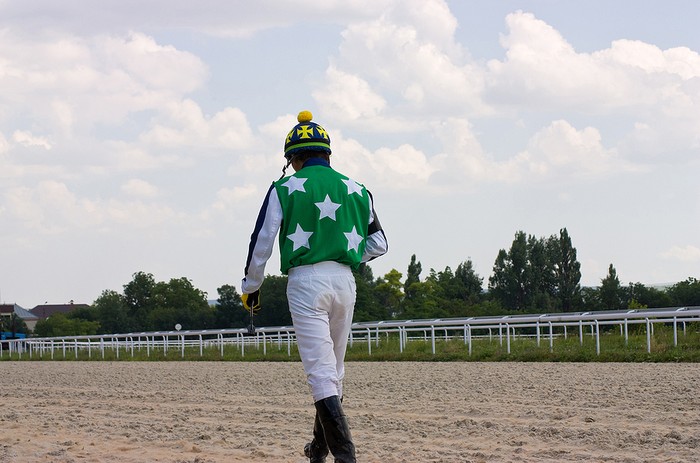 There are six racecourses in the UK that operate with an artificial all-weather surface. Although they remain firmly in the minority, there are some benefits from moving away from a traditional turf surface that racing has used for so long. It is not simply a case of picking one or the other though because included in all-weather surfaces you have three different kinds, each with its own strengths and limitations.
There are six racecourses in the UK that operate with an artificial all-weather surface. Although they remain firmly in the minority, there are some benefits from moving away from a traditional turf surface that racing has used for so long. It is not simply a case of picking one or the other though because included in all-weather surfaces you have three different kinds, each with its own strengths and limitations.
Given that different horses perform better on certain types of ground, it certainly could be useful to know which courses use which type of all-weather surface. Additionally, knowing the characteristics of a particular surface can be useful when trying to predict if a certain runner will likely shine on an all-weather debut or fail miserably.
UK Racecourses With All-Weather Tracks

The table below shows which type of artificial surface you will find at the six all-weather courses located within the UK. Some of the courses listed host both flat and jumps racing but the latter is always held on a separate turf course. All-weather jumps racing did use to exist but it was scrapped in 1999 due to a high rate of fatalities and injuries.
| Course | Surface |
|---|---|
| Chelmsford City (2015 – Present) | Polytrack |
| Great Leighs (2008 – 2009) | Polytrack |
| Kempton Park (2006 – Present) | Polytrack |
| Lingfield Park (2001 – Present) | Polytrack |
| Lingfield Park (1989 – 2001) | Equitrack |
| Newcastle (2016 – Present) | Tapeta |
| Southwell (2021 – Present) | Tapeta |
| Southwell (1989 – 2021) | Fibresand |
| Wolverhampton (2014 – Present) | Tapeta |
| Wolverhampton (2004 – 2014) | Polytrack |
| Wolverhampton (1993 – 2004) | Fibresand |
As you can see, Tapeta and Polytrack are the two favoured surfaces and they are the most similar too. Fibresand, which is the only real alternative, has fallen out of favour, abandoned by both tracks that once used it.
Chelmsford City
Originally opened as Great Leighs Racecourse in 2008, this is the second newest racing venue in the UK and one of just two built since Taunton in 1927. Unfortunately, it had to shut down shortly after opening but following a six-year hiatus, it did return with a brand-new name. Although the name changed, the Polytrack surface did not and it is one that trainers appear to be very fond of. The sweeping nature of the two broad corners makes the course galloping in nature and combined with two long straights, horses can rally stretch their legs here.
Kempton Park
Kempton previously had a turf flat and jumps course but the former was replaced in 2006. Taking its place was an oval Polytrack circuit featuring two loops. When racing takes place on the inner loop, frontrunners are favoured as it can be difficult to make up distance from further back. A more patient approach can reap rewards on the longer course though as here the finishing straight is nearly three furlongs long.
Lingfield Park
Lingfield is quite the unique racing venue as here you can watch jumps racing, flat racing on turf and flat racing on all-weather. For all-weather racing, they were the first to take the plunge too, hosting the first fixture of its kind back in 1989. Back then it used a surface known as Equitrack which is made from a mixture of sand and oil-based polymers. Remington Park in America installed the same surface a year earlier than Lingfield but scrapped it due to complaints just three years later.
Lingfield took a little longer to change but eventually swapped to Polytrack in 2001. Having flown the all-weather flag for so long, this Surrey-based course has established itself as one of the leading synthetic surface racing venues. As such, it is here you will find many of the top all-weather races including the Group 3 Winter Derby.
Newcastle
The newest of all the all-weather courses in the UK can be found at Newcastle, something that enjoyed its debut in May 2016. The entire development cost £11m although this did include the upgrading of other facilities at the course, and not just the new course. Part of the selling point for making the switch is that Newcastle would become the first all-weather course to feature a floodlit, one-mile straight track. The only other course able to host straight-line races in the UK is Southwell but their small chute only accommodates five-furlong sprints.
Additionally, Newcastle became the first course in the entire north of England to offer an all-weather course. There was so much interest in the inaugural meeting that one of the races, the Tapeta Footings Handicap, had to be divided into two separate 14-horse contests. The biggest race held here though is the historic Northumberland Plate which stands as one of the most valuable two-mile handicap races in Europe.
Southwell
With over 50 race meetings per year, Southwell is one of the busiest courses in the country. It first installed its all-weather track in 1989 with its maiden meeting held on 8th November, just more than a week after Lingfield debuted its own all-weather course. Unlike Lingfield though, Southwell debuted with a National Hunt meeting during the brief period in which jumps racing was allowed on an artificial surface.
Although few jockeys and trainers preferred Fibresand, Southwell stuck with their original choice for more than thirty years. In 2020 though they announced plans to move to Tapeta, citing the success of Newcastle and Wolverhampton as a major reason behind the decision.
The move, which was completed late in 2021, was generally met with approval with the likes of trainer John Gosden stating he was “delighted” with the introduction of Tapeta. Others, however, did not see the value of having a third racecourse with the surface when two perfectly good ones already existed. Some of these simply enjoyed the unique test Southwell used to provide while others, like Mick Appleby stated he would have rather seen an American-style dirt-track installed.
Wolverhampton
Wolverhampton has tried and tested all three major racing surfaces. Their initial selection was Fibresand its introduction in December 1993 was joined by a set of floodlights that enabled evening racing throughout the year. This is something they made the most of as they became the first UK course to offer regular late meetings outside of the summer.
The Fibresand surface had a decent run, surviving 11 years but in 2004 Polytrack took its place. Initially, the change was a welcome one but the Polytrack ended up deteriorating through much wear and tear. When dissatisfaction with the surface grew too strong, Wolverhampton shut their doors for several months while installing a new Tapeta surface in the summer of 2014. Time will tell how long this lasts because Wolverhampton does host a phenomenal amount of racing throughout the year. Most courses can offer more in terms of quality but with around 80 fixtures per year, very few come close to Wolverhampton when it comes to quantity.
Polytrack, Tapeta & Fibresand Compared

Polytrack is made from silica sand and fibres of recycled carpet, spandex and rubber. This combination is then coated with wax to keep it all together. Tapeta is very similar in its composition and is made from sand, fibres, rubber and wax. Subsequently, it shares many of the same benefits that you get with Polytrack.
Some jockeys and trainers have their preferences between the two but ultimately with both Tapeta and Polytrack you are getting a fair and consistent surface. This helps minimise the impact of any draw bias because there is no ‘better’ surface in a particular strip of the course. This is not to say draw bias does not exist at all-weather courses though because the nature and location of any turns can impact this.
Back to Tapeta and Polytrack though and both are what you would consider to be ‘fair’ surfaces and ones that are both widely deemed safe too. Indeed, the producers of Polytrack claim their surface is ‘scientifically proven’ to minimise the risk of injury thanks to the cushioned and consistent ground horses have to run on. Impressed by the surface, there are over 20 racecourses across the globe that use Polytrack, making it comfortably the most popular synthetic surface in the industry.
Tapeta is not quite as popular although you can find it in the USA (Presque Isle Downs, Golden Gate Fields), Australia (Tapeta Park Racecourse) and Canada (Woodbine Racecourse). In addition to this, Tapeta is used as part of many training tracks across the globe. Much like Polytrack, it appears to be a very safe surface. Research conducted in 2017 found that in North America the injury rate on Tapeta was just 0.63% compared with 1.36% for turf surfaces and 1.74% for dirt. Additionally, looking at over 10,000 runners in the UK, the fatality rate of horses was just 0.03%.
Another major perk of both Polytrack and Tapeta is the minimal amount of kickabout. This is one of the problems Fibresand suffers from as it is so easy to flick the silica sand surface upwards and into the path of any trailing horses. It is for this reason that Fibresand courses are widely thought to benefit frontrunners rather than hold-up horses as the former manages to avoid all the kickback.
Fibresand is also the slowest of the three all-weather surfaces thanks to its soft and absorbent consistency. In terms of turf racing equivalent, racing on Fibresand would be akin to racing on ‘soft’ going whereas Polytrack and Tapeta are close to ‘good’. Creating a more unique all-weather challenge, you tend to get a fair share of course specialists on Fibresand as not all runners can deal with its energy-sapping nature. One example is Bond Angel who won or placed 16 of her 29 attempts on Southwell’s old Fibresand course.
| Polytrack | Tapeta | Fibresand | |
|---|---|---|---|
| Equivalent Turf Going | Good or Good To Firm | Good | Soft |
| Kickback | Minimal | Minimal | Considerable |
| Pace Bias | Course dependent | Course dependent | Front runners favoured |
| Introduced to UK | 2001 | 2014 | 1989 |
